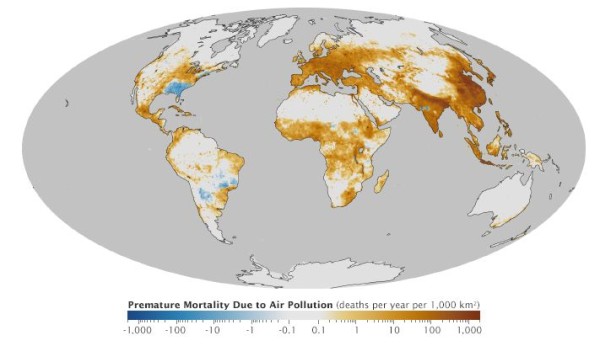
© Map made by NASA’s Robert Simmon based on data from Jason West
Each year millions of premature deaths world-wide result from various forms of air pollution. According to a new atmospheric pollution model designed by earth scientist Jason West of the University of North Carolina (data from which informs the NASA map shown above), some 2.1 million deaths per year result from just one particular form of atmospheric pollution:
fine particulate matter, or PM2.5, which is emitted in car exhaust and smokestack effluent (and other industrial, domestic and natural sources).
In general, these
polluting particles in the atmosphere are referred to as aerosols (a mixture of particulate matter and air). Aerosols can take the form of suspended particulate matter (SPM), respirable suspended particles (RSP), which are particles with a diameter of 10 micrometers (microns) or less, and, the aforementioned fine PM2.5...the '2.5′ refers to particles of 2.5 microns or less and may include ultrafine particles, and some forms of soot (such as black carbon soot from cooking stoves and biomass burning).
Sometimes transient, natural, meteorological conditions combine with human pollution, resulting in "extreme outbreaks of air pollution." For example, in January, 2013, a blanket of industrial pollution enveloped northeastern China, and, in June, 2013, smoke from agricultural fires in Sumatra engulfed Singapore.
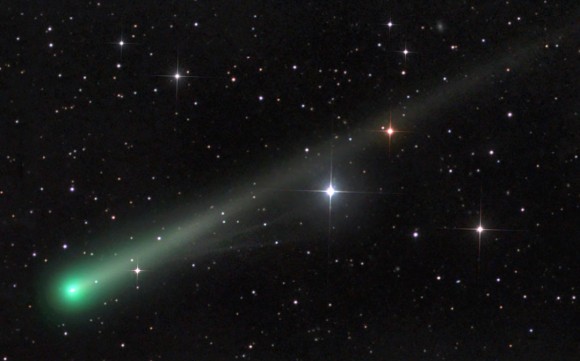
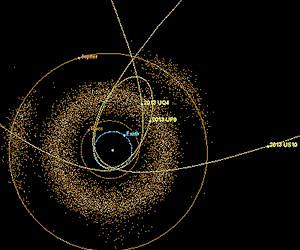

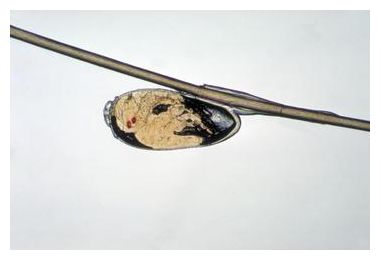
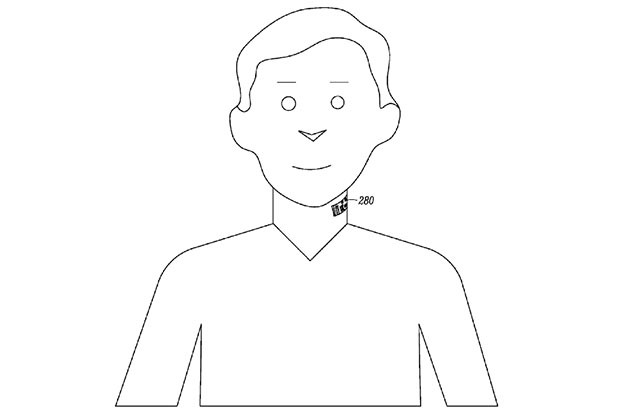


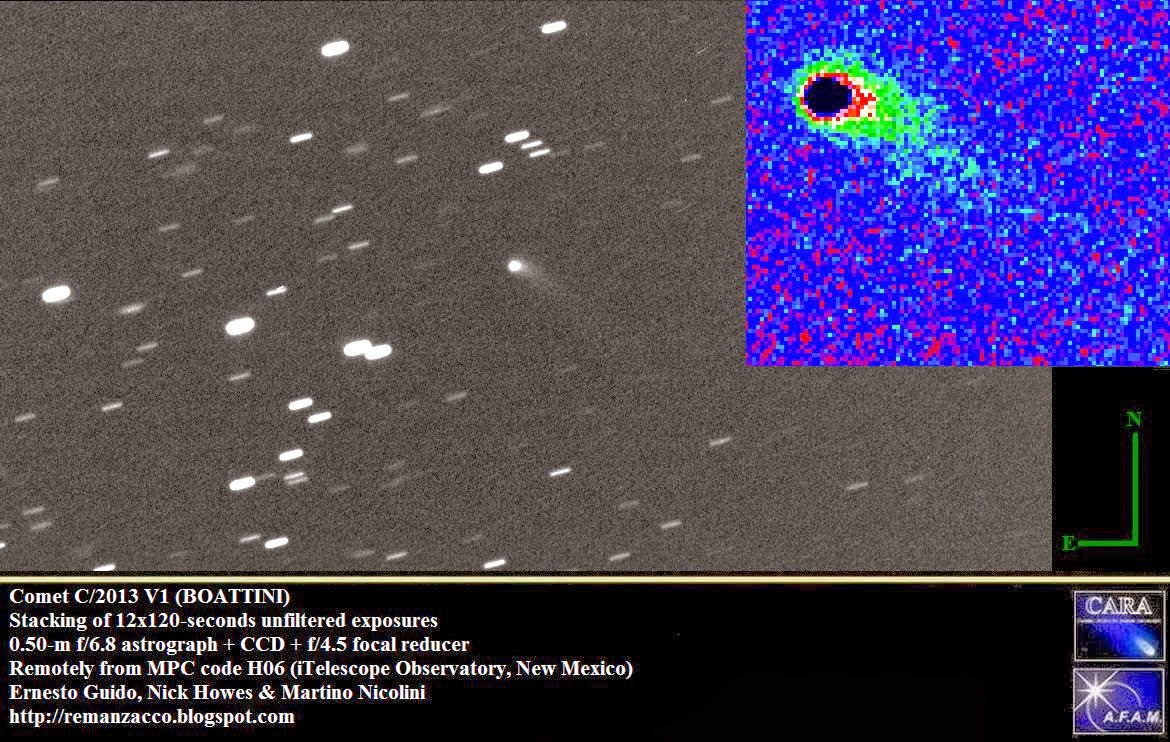
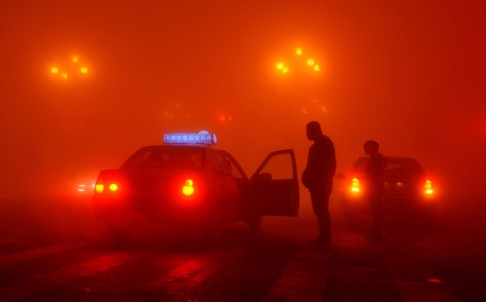




Comment: See also:
Rare 'asteroid' sporting tail spotted
Crashed asteroid has a tail that keeps getting longer
Asteroid 3200 Phaethon behaving like a comet
The evidence is staring them in the face, but because they cling to the old assumptions, they are unable to see that all space rocks can become electrically charged in an Electric Universe!
To learn the truth about asteroids and comets, get your copy of The Apocalypse: Comets, Asteroids and Cyclical Catastrophes, by Laura Knight-Jadczyk.